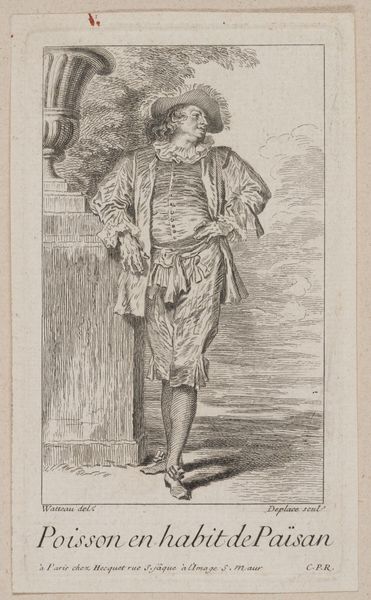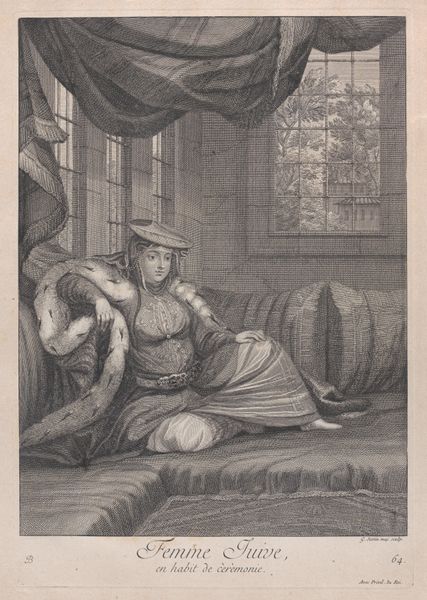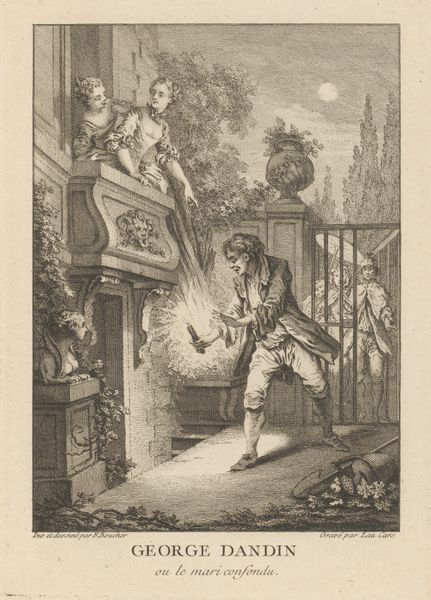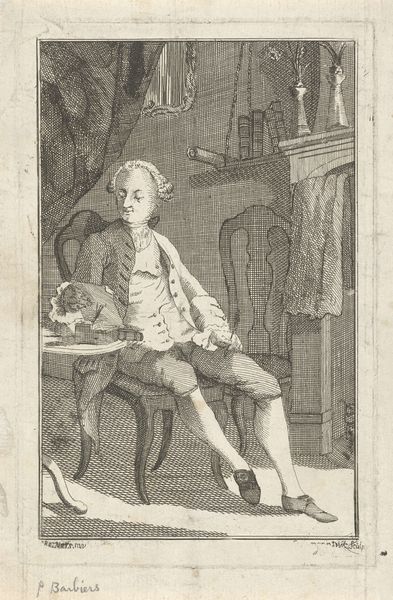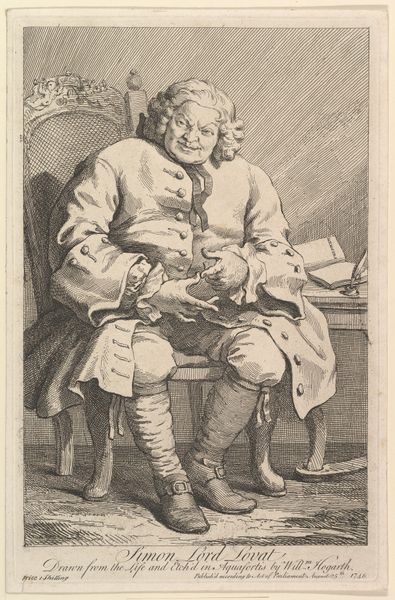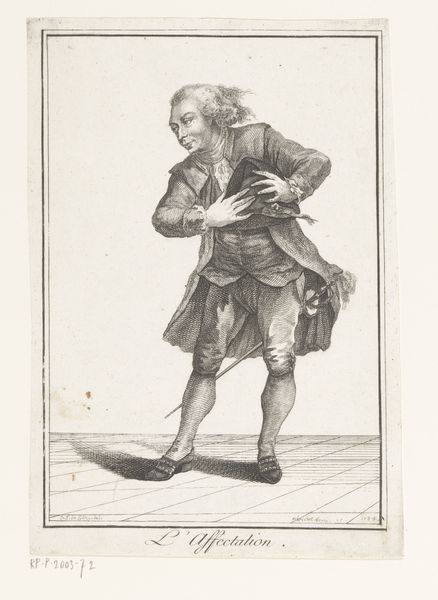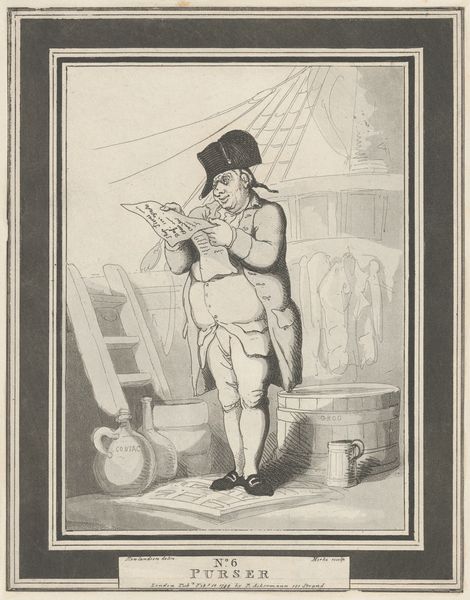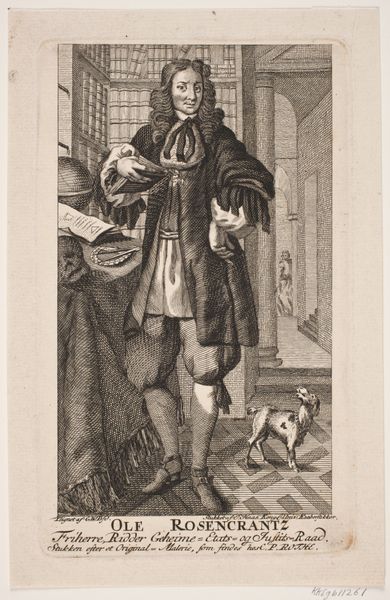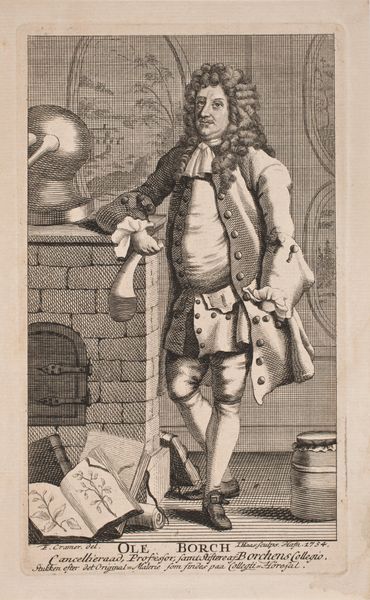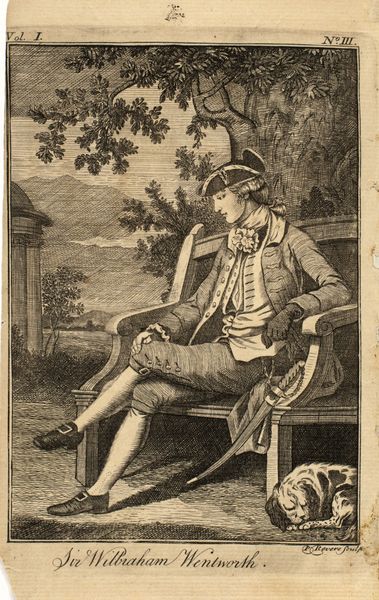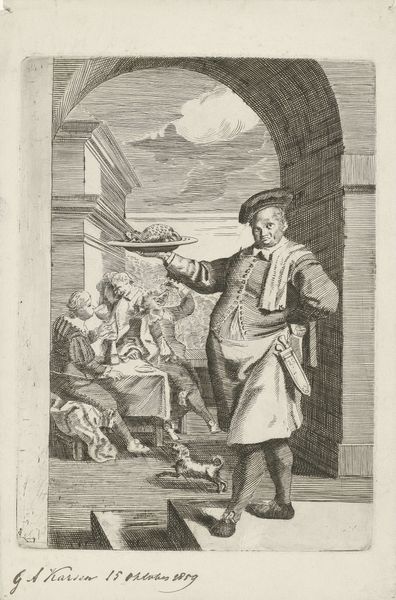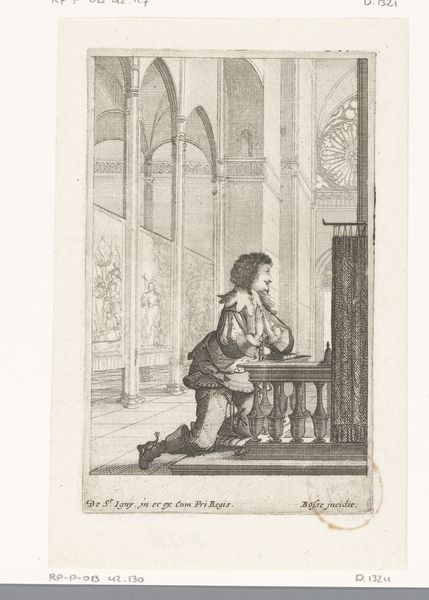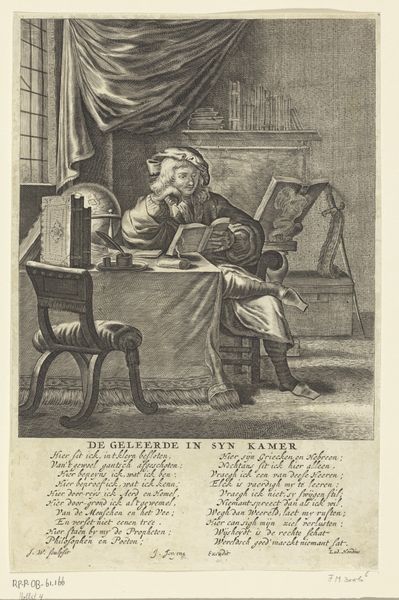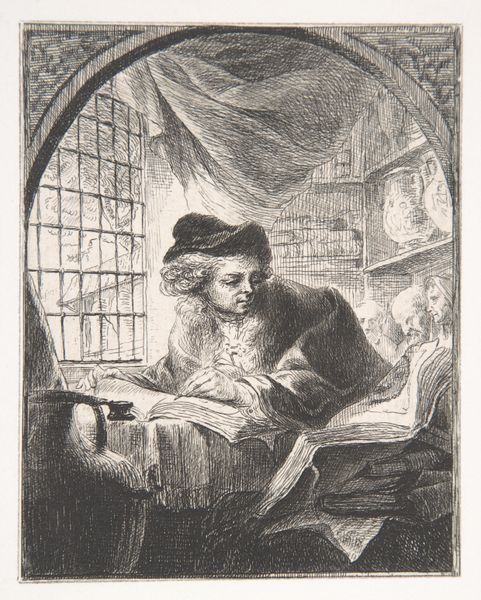
Décrotteur (Shoe Shiner), from Mes gens, ou Les commissionnaires ultramontains au service de qui veut le payer (Servants for Public Hire) 1766 - 1770
0:00
0:00
Dimensions: Sheet: 13 11/16 × 10 7/16 in. (34.7 × 26.5 cm) Plate: 9 7/16 × 6 15/16 in. (24 × 17.7 cm)
Copyright: Public Domain
Editor: We're looking at Jean-Baptiste Tillard’s “Décrotteur (Shoe Shiner),” an engraving from the late 1760s. The figure seems caught in a moment of… I don't know, quiet weariness? What do you see in this piece, beyond its immediate subject? Curator: The artist does capture a specific kind of working-class fatigue, but I'd argue it's intertwined with a sharp social commentary. Think about the title—"Servants for Public Hire." It's less about the individual shoe shiner and more about the economic realities that forced people into these subservient roles. How does the setting inform this, do you think? Editor: Well, he’s indoors, standing awkwardly in what looks like a very nice home. So, there’s that contrast of classes right away. Curator: Exactly! Tillard cleverly uses the domestic space—the striped wallpaper, the portrait on the wall, even the ornate chair—to highlight the disparities of 18th-century French society. It’s not just a genre scene, it’s a visual statement about the social hierarchy and the precariousness of those who exist at its base. The Baroque period, though associated with ornamentation, produced critical voices questioning power structures. Where do you see evidence of this kind of "questioning" in the image itself? Editor: Hmm… maybe the shiner's downward gaze, and the slightly unkempt appearance? Like he doesn’t quite “fit” in this fancy interior. Curator: Precisely. The visual composition subtly undermines any sense of order and reinforces the notion of social unease and injustice. And the relatively clean shoes he’s meant to clean! Tillard encourages us to question the romanticized notions of the era. Editor: So, it’s less about portraying a specific person, and more about using him to critique a system? Curator: Yes, by portraying him with such directness and using the trappings of wealth to expose the cracks in that system. That's an early form of social activism using art. Editor: I see! Looking at it that way really changes how I understand the piece. Thanks for helping me unpack that. Curator: My pleasure! Art is never created in a vacuum, and exploring these layers is where the real meaning lies.
Comments
No comments
Be the first to comment and join the conversation on the ultimate creative platform.
